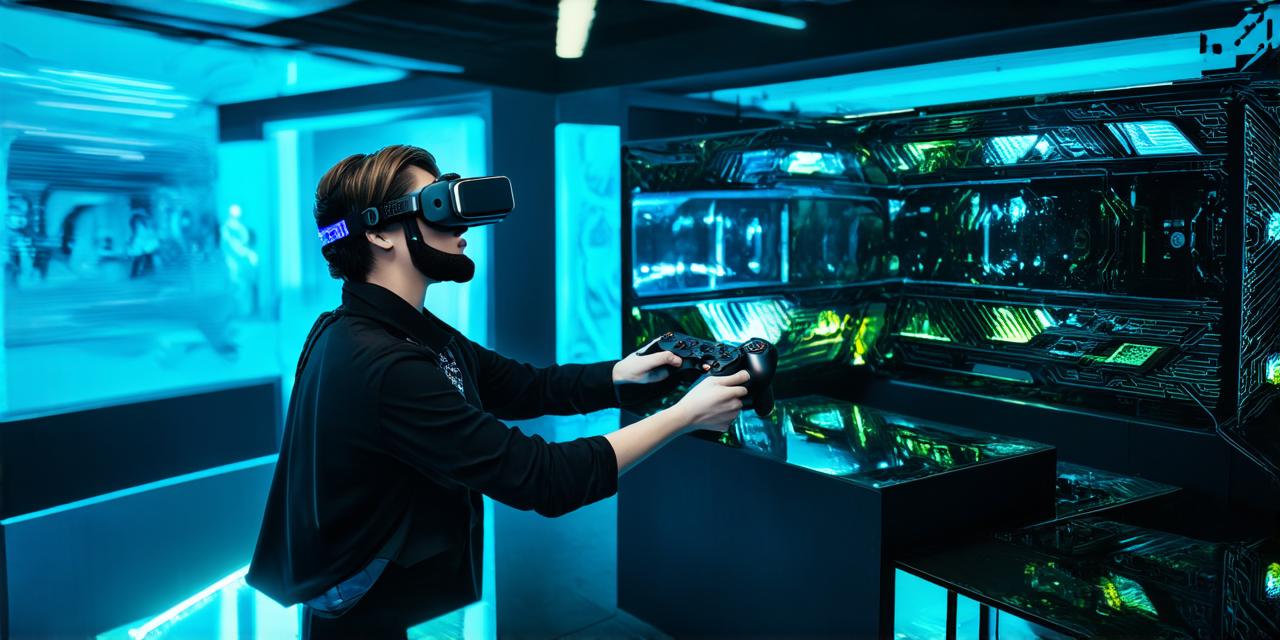<!DOCTYPE html>
Are you looking to take your virtual reality (VR) development skills to the next level? Are you interested in creating fully immersive experiences that transport users into different worlds and dimensions? If so, you’re in the right place. In this guide, we’ll explore everything you need to know about full dive VR development, including the latest tools and techniques for building engaging and interactive experiences.
Full Dive VR vs. Traditional VR: What’s the Difference?
Before we dive into the world of full dive VR development, it’s important to understand the difference between this technology and traditional VR. Full dive VR is a type of VR experience that completely immerses the user in a virtual environment. It typically involves the use of specialized hardware, such as headsets, gloves or hand controllers, and other devices that track the user’s movements in real-time.
On the other hand, traditional VR experiences are usually less immersive and often involve the use of a single display screen. These experiences are typically created using game engines such as Unity or Unreal Engine and require a powerful computer to run smoothly.
Tools and Techniques for Full Dive VR Development
1. Unreal Engine: Unreal Engine is one of the most popular game engines used for full dive VR development. It supports a wide range of platforms, including Oculus, HTC Vive, and PlayStation VR. Unreal Engine also features a powerful visual scripting system that makes it easy to create interactive experiences without the need for coding.
2. Unity: Unity is another popular game engine used in full dive VR development. It supports a wide range of platforms, including Oculus, HTC Vive, and PlayStation VR. Unity also features a powerful scripting system that allows developers to create interactive experiences using C or JavaScript.
3. OpenVR: OpenVR is an open-source VR platform that allows developers to build cross-platform experiences for multiple VR platforms. It supports a wide range of hardware, including Oculus, HTC Vive, and PlayStation VR.
4. A-Frame: A-Frame is a web-based VR framework that allows developers to create immersive experiences using HTML, CSS, and JavaScript. It supports a wide range of platforms, including Oculus, HTC Vive, and Samsung Gear VR.
5. Full Dive SDKs: Full Dive SDKs are software development kits (SDKs) that provide developers with the tools and libraries they need to build fully immersive experiences. These SDKs typically include support for specialized hardware such as headsets, gloves or hand controllers, and other devices that track the user’s movements in real-time.
Case Studies and Personal Experiences
Now that we’ve discussed some of the key tools and techniques for full dive VR development, let’s take a look at some case studies and personal experiences to see how these technologies are being used in practice.
The Lab
The Lab is a virtual reality experience created by Valve Corporation. It features a variety of interactive games and experiences that are designed specifically for full dive VR. The Lab showcases the power of full dive VR development, and demonstrates how these technologies can be used to create truly immersive experiences.
Virtual Reality Amusement Park
In 2017, a virtual reality amusement park opened in Shanghai, China. The park features a variety of VR experiences that are designed specifically for full dive VR development. Visitors can ride roller coasters, explore haunted houses, and even participate in interactive games.
Virtual Reality Training
Full dive VR is also being used for training purposes. For example, the military has been using VR simulations to train soldiers for combat situations. These simulations allow soldiers to practice their skills in a safe and controlled environment, without the risk of injury.
FAQs
Q: What hardware do I need to build a full dive VR experience?
A: To build a full dive VR experience, you will typically need specialized hardware such as headsets, gloves or hand controllers, and other devices that track the user’s movements in real-time.
Q: Do I need to learn how to code to build a full dive VR experience?
A: While coding can be helpful for building more advanced full dive VR experiences, many game engines such as Unreal Engine and Unity include powerful visual scripting systems that make it easy to create interactive experiences without the need for coding.
Q: What platforms do I need to support to build a cross-platform full dive VR experience?
A: To build a cross-platform full dive VR experience, you will typically need to support a wide range of platforms including Oculus, HTC Vive, and PlayStation VR.
Summary
In conclusion, full dive VR development is an exciting and rapidly growing field that offers developers the opportunity to create truly immersive experiences. By using the tools and techniques discussed in this guide, you can build engaging and interactive experiences that transport users into different worlds and dimensions. Whether you’re a seasoned developer or just starting out, there’s no better time to explore the world of full dive VR development.
